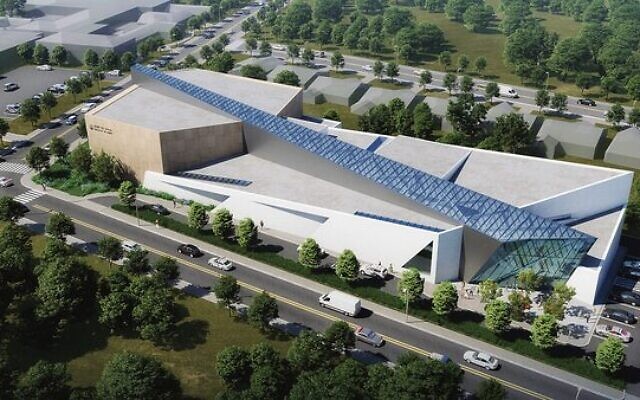Attack site to be transformed
'This is no longer the Tree of Life before the attacks. It's a different space.'

The caretakers of the Tree of Life synagogue intend to transform the site of the deadliest antisemitic attack in US history and expand its mission.
Newly released design plans show a revitalised complex housing a sanctuary, museum, memorial and centre for fighting antisemitism – unified symbolically and physically with a dramatic skylight running the length of the structure.
Organisers are also announcing plans for a new Tree of Life nonprofit organisation that would work with the similarly named congregation, oversee the building complex and offer education, museum exhibits and programming to counter hatred aimed at Jews and other groups.
The synagogue building – located in the Squirrel Hill neighbourhood, the heart of Jewish Pittsburgh – has been vacant since October 27, 2018. A gunman, who awaits trial on capital federal charges for what prosecutors say was a hate-motivated attack, killed 11 worshippers from Tree of Life and two other congregations – Dor Hadash and New Light – that shared the building.
The new design is by renowned architect Daniel Libeskind, whose previous works include Jewish museums, Holocaust memorials and the master plan for the redevelopment of the World Trade Centre after 9/11.
Organisers said they do not have a cost estimate or a timetable yet for the construction project. And many of the details for the interior, including the design of a memorial, are still being determined. The organisers are raising funds locally and nationally. But they see Tuesday’s announcements as a big stride.
“We’re eager to be back in our spiritual home,” said Rabbi Jeffrey Myers, a survivor of the attack and rabbi of Tree of Life/Or L’Simcha Congregation, as it is formally known.
The plans call for retaining the synagogue’s large, main sanctuary, which was unused on the day of the attack.
Other parts of the complex would be razed, including a separate chapel where most of the killings occurred, though its historic stained-glass windows would be preserved. A new addition – framed by dramatically angled exterior walls, a hallmark of previous Libeskind projects – would incorporate the museum, a memorial to the victims and space for education and other programs.
Unifying the complex – at about 4200 square metres in all – would be a skylight that spans the entire length of the roof, according to Libeskind’s design. The “Path of Light,” as Libeskind titles it, would begin in the historic sanctuary and widen, ray-like, across the programming area toward a new, more secure entrance.
“The light is not only physical light, it’s also spiritual light,” he said.
Libeskind said he met with congregants and survivors as he prepared the design. He kept in mind the long history of the congregation – which was founded in 1864 and dedicated its current sanctuary a century later – as well as its present reality.
“The building has to be a response to the needs of the community, but it is also a response after the attacks,” he said. “This is no longer the Tree of Life before the attacks. It’s a different space.”
TIMES OF ISRAEL, AP

comments